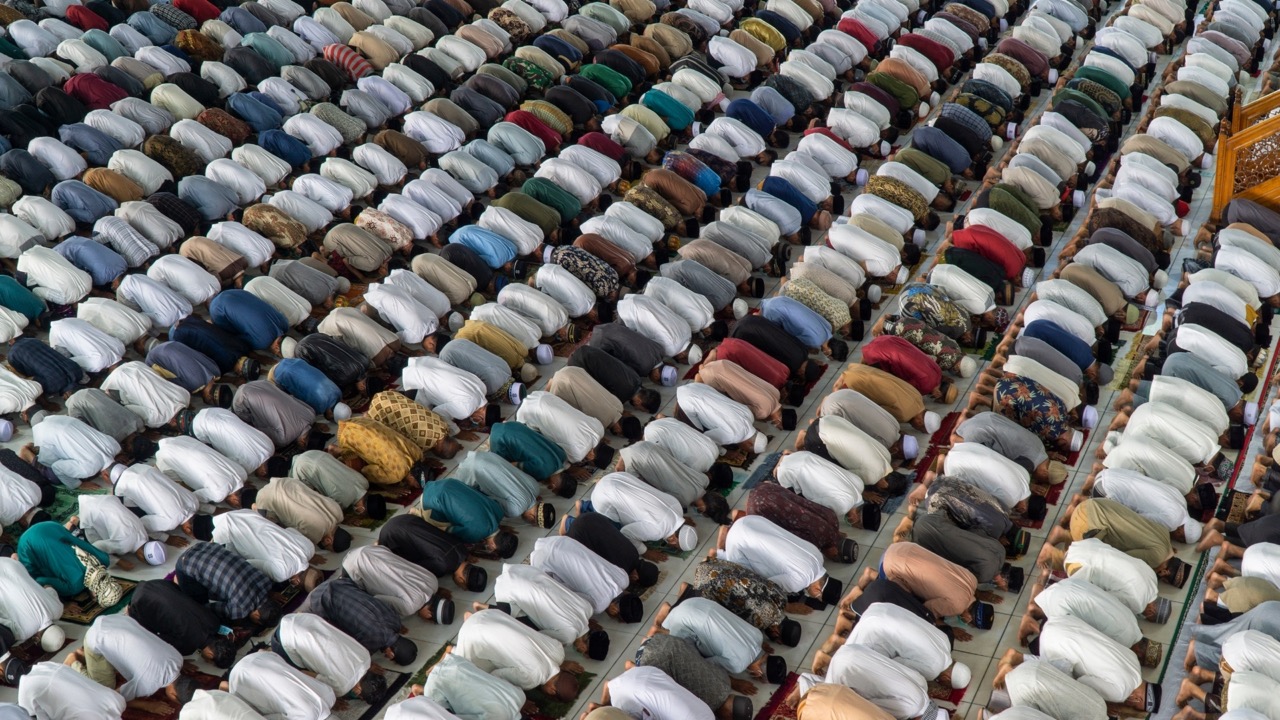What is Eid Prayer?
Eid prayer is a two-rak’ah prayer performed in congregation on the mornings of Ramadan and Eid al-Adha in the Islamic religion. According to the Hanafi school of jurisprudence, it is wajib (obligatory). The three additional takbirs in each rak’ah of this prayer are called “zawa’id takbirs” (extra takbirs). These wajib takbirs are recited before the qira’ah (recitation) in the first rak’ah and after the qira’ah in the second rak’ah. This prayer is an important act of worship that strengthens the unity and solidarity of Muslims.
When is Eid Prayer Performed?
The earliest time for the prayer begins when, looking from an elevated place in the town, the sun rises from its place of rising by the amount of a spear, that is, about twelve hand-spans, and its color whitens (that is, forty-five minutes after sunrise). The last time is until the sun reaches its zenith (zawal). When the zawal time arrives, the Eid prayer is no longer permissible.
Preparation for Eid Prayer
Some preparations that are mustahabb (recommended) to be made before going to Eid prayer are as follows:
- Using miswak before going to prayer.
- Performing ghusl (ritual bathing).
- Applying pleasant fragrance.
- Wearing clean, halal clothing.
- Waking up early on Eid morning.
- Walking to the prayer if possible.
How is Eid Prayer Performed?
Eid prayer is performed in congregation as two rak’ahs, with additional (zawa’id) takbirs in each rak’ah.
First Rak’ah
- Niyyah (Intention): The intention is made in the heart: “I intend to perform the Eid prayer for the sake of Allah’s pleasure, and I follow the present imam.”
- Iftitah Takbir: After saying “Allahu Akbar” and taking the opening takbir together with the imam, the hands are folded.
- Subhanaka Du’a: The “Subhanaka” du’a is recited silently.
- Three Zawa’id Takbirs: After “Subhanaka,” the imam says aloud and the congregation says silently “Allahu Akbar,” raising their hands to their ears and dropping them to the sides; then raising the hands again, the second takbir is taken and the hands are dropped to the sides; when the third takbir is taken, the hands are folded.
- Fatihah and Additional Surah: The imam recites aloud Surah al-Fatihah and an additional surah (one surah or at least three verses), while the congregation listens.
- Ruku and Sujud: After ruku (bowing) and sujud (prostration), one stands for the second rak’ah.
Second Rak’ah
- Fatihah and Additional Surah: In the second rak’ah, the imam first recites Surah al-Fatihah, then an additional surah.
- Three Zawa’id Takbirs: Then three takbirs are taken, and the hands are dropped to the sides after each takbir.
- Fourth Takbir: With the fourth takbir, “Allahu Akbar” is said and one goes into ruku.
- Ruku and Sujud: Ruku and sujud are performed, then one sits.
- Tahiyyat and Du’as: While sitting, “Tahiyyat,” “Salli-Barik,” and “Rabbana” du’as are recited.
- Salam: The prayer is completed by giving salam first to the right, then to the left.
Khutbah After Eid Prayer
After the Eid prayer, the imam delivers a khutbah to the congregation. In Jumu’ah prayer, the khutbah is recited before the fard; in Eid prayers, it is recited after the prayer. The khutbah begins with takbir, and the congregation joins in these takbirs with a soft voice. The khutbah is one of the sunan (recommended practices) of Eid prayer, and listening to it is advised. During the khutbah, it is sunnah not to speak and to listen attentively.
Takbirs of Tashriq
During Eid al-Adha, from the Fajr prayer on the Day of Arafah until the Asr prayer on the fourth day of Eid, takbirs of tashriq are recited after the fard prayers. These takbirs are: “Allahu Akbar, Allahu Akbar, La ilaha illallah, Allahu Akbar, Allahu Akbar wa lillahil hamd.”
The takbirs are completed in twenty-three prayer times. In these twenty-three times, for anyone upon whom the five daily prayers are obligatory, it becomes wajib to recite the takbir immediately after giving salam from the fard prayers.
When giving salam to the left side, it is necessary to recite the takbir without getting up from one’s place, without leaving the masjid, and without speaking worldly words.
In Conclusion
Eid prayer is one of the beauties of Islam with its spiritual atmosphere and the spirit of being together with the congregation. Above all, this special act of worship is a means for Muslims to share brotherhood, togetherness, and Eid joy. Therefore, waking up early on Eid morning and preparing, going to the masjid while observing the sunan, and performing the Eid prayer with khushu’ (humility and concentration) is both a great act of worship and a spiritual renewal.
Frequently Asked Questions About Eid Prayer
- How Many Rak’ahs is Eid Prayer? Eid prayer is performed as two rak’ahs. In each of these two rak’ahs, additional (za’id) takbirs are taken.
- Is Eid Prayer Performed in Congregation? Yes, Eid prayer is performed in congregation. According to the Hanafi school, performing it in congregation is wajib.
- Can Eid Prayer be Performed at Home? According to the Hanafi school, Eid prayer is performed in congregation and is not performed individually at home.
With the wish that you perform your Eid prayer correctly, may your Eid be blessed!


